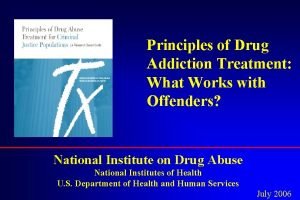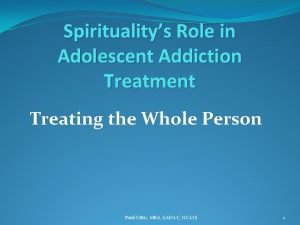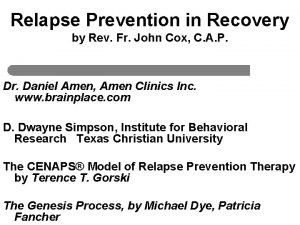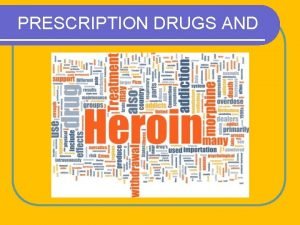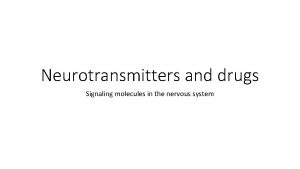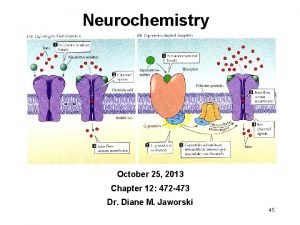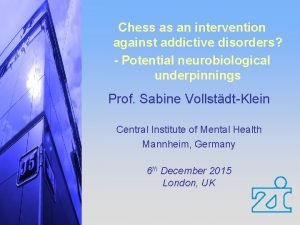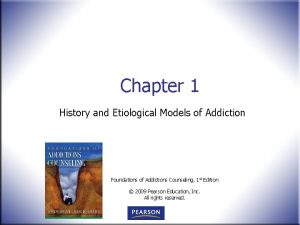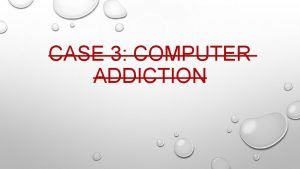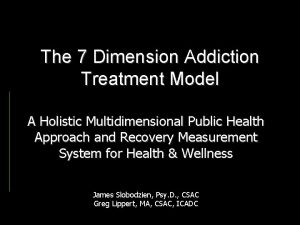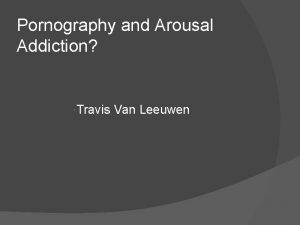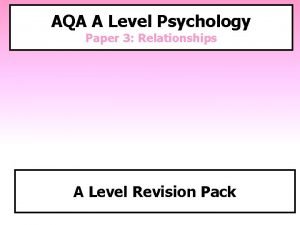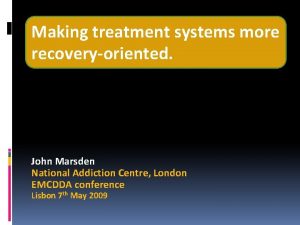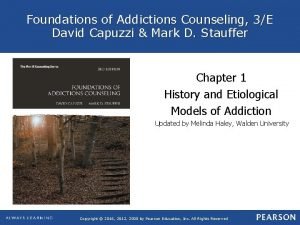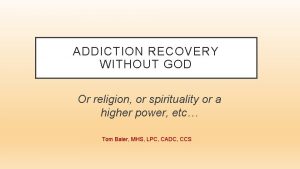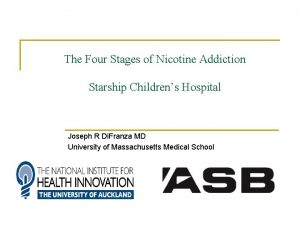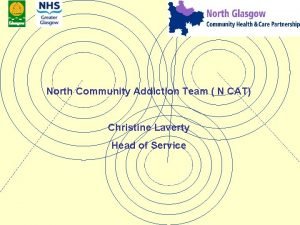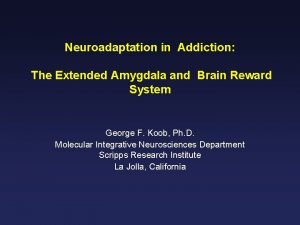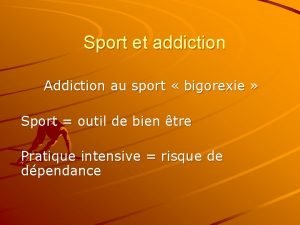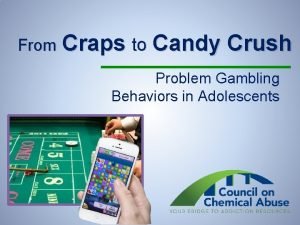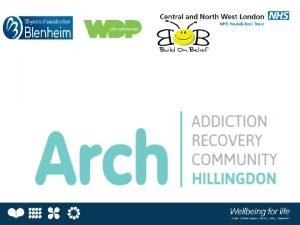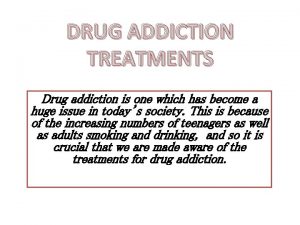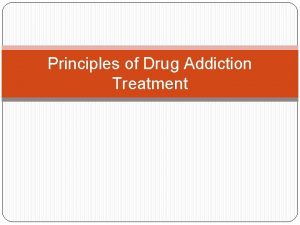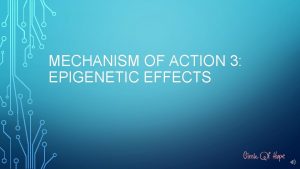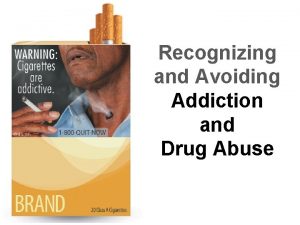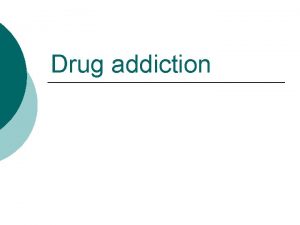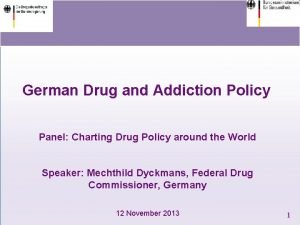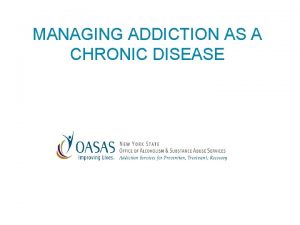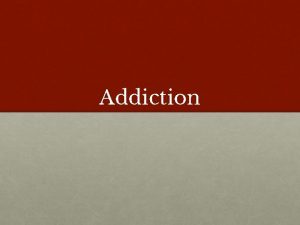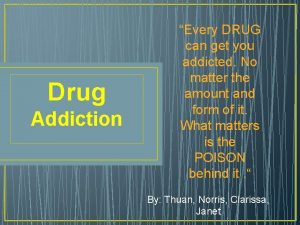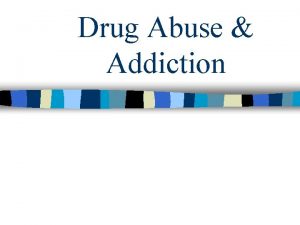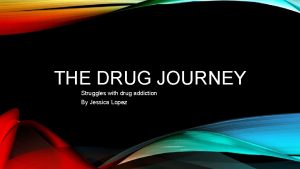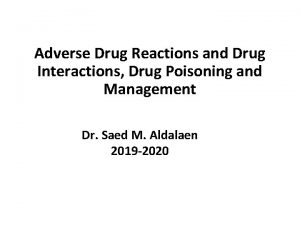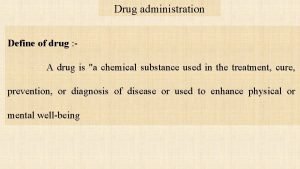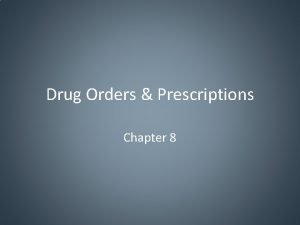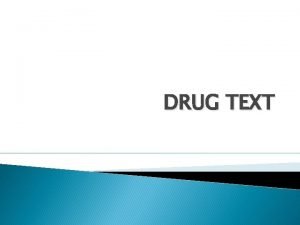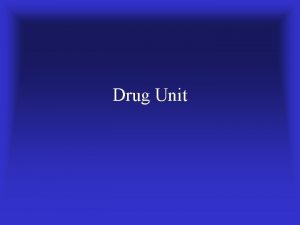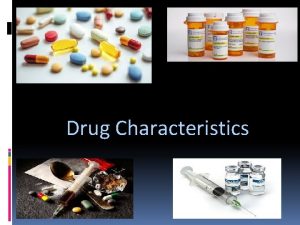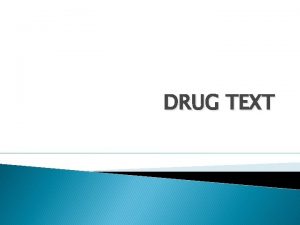Drug addiction and Epigenetic What is Addiction Disease


































- Slides: 34

Drug addiction and Epigenetic

What is Addiction? “Disease is characterized by 3 major elements: I) Compulsion to seek and take the drug II) Loss of control in limiting intake III) Emergence of a negative emotional state when access to drug is prevented”

Drugs inducing addiction? l • Heroin addiction l • Cocaine addiction l • Alcohol addiction (“alcoholism”) l • Marijuana addiction l • Amphetamines addiction l • Nicotine addiction

Factors inducing addiction? l • Sex addiction? ? l • Gambling addiction? ? l • Food addiction? ? l • Shopping addiction? ? l • Internet addiction? ? l • Cell phone addiction? ?

Drug Abuse and Addiction are Among the Most Serious Public Health. Problems Facing Our Society • and Frequently Coexist with Other Mental and Physical Disorders

Risk Factors for addiction? l • Reward & Pleasure l • Disorders (Pain, Anxiey…. ) l • Genetic factors

REWARD

History • James Olds (1954) • Pleasure is a distinct neurobiological function that is linked to a complex reward & reinforcement system • Biochemical & Biological studies

James Olds (1954)

Drug Reward • Reward: A response to a stimulus which causes pleasure; natural reward (food, liquids, sex) as well as electrical stimulation and many drugs • Reinforcement: Continuing an action which has been shown reward previously

Systems involves in biology of REWARD • Serotonin in Hypothalamus • Enkephalins (opioid peptide) in VTA & Nucleus accumbens • GABA in VTA & Nucleus accumbens • NE (Release of NE in Hyppocampus from neuronal fibers that originate in the LC)

Importance of Reward • Reinforcement (Reward) leads to more drug administration • Which may lead to drug tolerance • To gain the previous drug effect after tolerance induction, Higher doses of drug is needed which may cause dependence


Dopamine Pathways striatum frontal cortex hippocampus Functions • reward (motivation) nucleus • pleasure, euphoria accumbens • motor function (fine tuning) • compulsion • perserveration • decision making substantia nigra/VTA Serotonin Pathway Functions raphe • mood • memory processing • sleep

The Reward Pathway

Dopaminergic System Is the final common pathway


Dopamine receptors • D 1 type (D 1 & D 5) increase c. AMP • D 2 type (D 2, D 3 & D 4) decrease c. AMP

Reward Pathway The following neurotransmitters act on the reward pathway: Dopamine • Receptors: D 1, D 2 • Function: pleasure, euphoria, mood, motor function Cannabinoids • Receptors: CB 1, CB 2 • Function: Pain, appetite, memory Serotonin • Receptors: 5 HT 3 • Function: mood, impulsivity, anxiety, sleep, cognition Opioid peptides (Endorphins, Enkephalins) • Receptors: Kappa, Mu, Delta • Function: pain In all rewards, dopamine is the final activation chemical

Reward Pathway Neurotransmitters and anatomical sites involved in the acute reinforcing effects of drugs of abuse Dopamine Opioid Peptides Ventral tegmental area, nucleus accumbens Nucleus accumbens, amygdala, ventral tegmental area GABA Glutamate Amygdala, bed nucleus of stria terminalis Nucleus accumbens

Drug addiction and Epigenetic

Common Underlying Neurobiological Factors Can Be: Neurochemical (imbalance of neurotransmitters) Structural/anatomical (same regions and pathways) Genetic (inherited factors that compromise function)

Why is Continued Treatment Critical? Normal Control Meth user (1 month abstinent) Meth user (36 months abstinent) Partial Recovery of Dopamine Transporters 23 After Prolonged Abstinence



Common Molecular Changes Associated with Dependence l Dopamine D-2 receptor binding decreased in human imaging studies in dependent subjects l CREB ( cyclic adenosine monophosphate response element binding protein) transcription factor decreased in nucleus accumbens and extended amygdala during the development of dependence l Delta-Fos. B transcription factor changed during protracted abstinence to drugs of abuse

Animal Models (Based on Conditioning) • Intracranial Self-stimulation • Drug Self-administration • Conditioning Place Preference

James Olds (1954)


CPP Apparatus A B C




 Epigenetic
Epigenetic Epigenetic modulation
Epigenetic modulation Principles effective addiction treatment
Principles effective addiction treatment Bharathi viswanathan
Bharathi viswanathan Methods of adulteration of crude drugs
Methods of adulteration of crude drugs Spirituality and addiction
Spirituality and addiction Sex addiction assessment
Sex addiction assessment Faster scale addiction
Faster scale addiction Learn.genetics.utah/content/addiction/mouse
Learn.genetics.utah/content/addiction/mouse Http://learn.genetics.utah.edu/content/addiction/
Http://learn.genetics.utah.edu/content/addiction/ Epinephrine in the brain
Epinephrine in the brain Journal of neuroscience methods
Journal of neuroscience methods Models of etiology of addiction
Models of etiology of addiction Give two pieces of advice from tablets
Give two pieces of advice from tablets Addiction expert witness
Addiction expert witness The teap of ace
The teap of ace Arousal addiction
Arousal addiction Internet addiction reading comprehension
Internet addiction reading comprehension Virtual relationship psychology
Virtual relationship psychology 12 core functions of addiction counseling
12 core functions of addiction counseling Absorption addiction model
Absorption addiction model Addicted to sin
Addicted to sin Scratching addiction
Scratching addiction John marsden addiction
John marsden addiction Supracultural model of addiction
Supracultural model of addiction Avrt addiction treatment
Avrt addiction treatment 4 stages of zyn addiction
4 stages of zyn addiction Addiction vs compulsion
Addiction vs compulsion Christine laverty
Christine laverty Allostasis vs homeostasis
Allostasis vs homeostasis Any unnecessary or improper use of chemical substances
Any unnecessary or improper use of chemical substances Bigorexie definition
Bigorexie definition Candy crush gambling
Candy crush gambling Chronic addiction
Chronic addiction Arch alcohol
Arch alcohol


